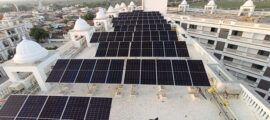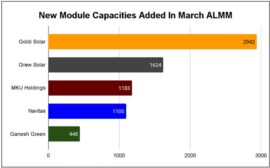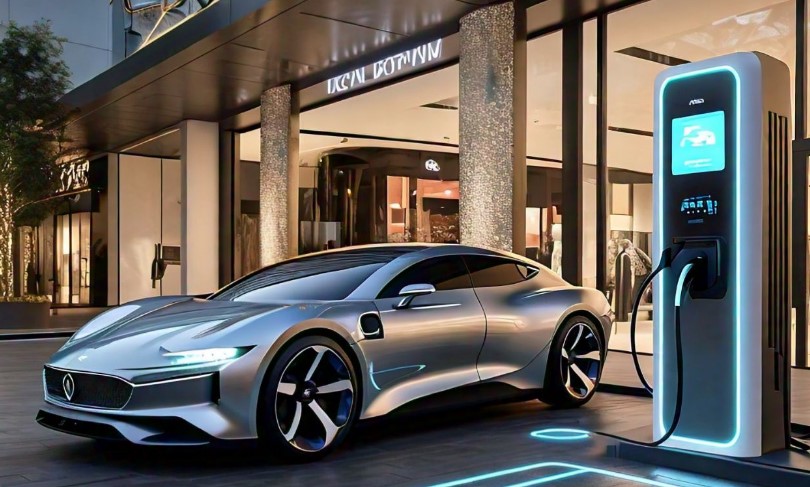
The recent speed breaker in the sales of Electric Vehicles (EVs) has raised many worries that the industry might be heading for trouble. However, we believe that this temporary blip will soon be a memory as sales pick up again, mainly due to the visible improvements one can expect in EV charging infrastructure, as well as a further drop in EV prices. Issues like the tax exemptions to hybrid vehicles will not be as critical as they are made out to be.
Why EV Infra Matters
Electric Vehicles have an inherent challenge of dearth of supportive infrastructure, which the sector had been grappling with for many years since the consumers started showing interest in the new era product and the manufacturers ramped up productions.
Drivers used to buying petrol or diesel were baulking at having to rely on a visibly smaller network of public charging locations, with even the fastest chargers taking more time than pumping fuel. Level 2 chargers take much longer, taking hours to charge up an EV.
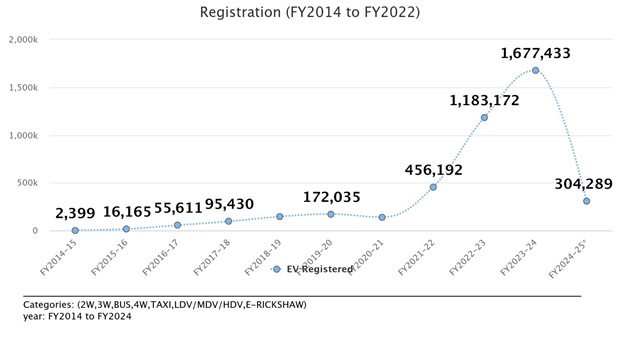
After an initial rise in total EV registrations, the sector seems to be going through a challenging time. Source; CEEW EV Dashboard.
Today, we’re going to be taking a look at the EV charger situation worldwide and the developments being made in it. All this has combined to create the much discussed ‘range anxiety’ that has kept many buyers from taking the EV plunge. But it’s all set to change soon.
Our first example, India is making massive strides in EV charger installation. The national capital, Delhi is infamous for its pollution, with the air turning outright toxic during the winter months in the city. A number of issues contribute to this problem, with vehicular pollution being one of the main contributors. As such, officials in the city have come up with a number of action plans to implement EV chargers and further the adoption of EVs.
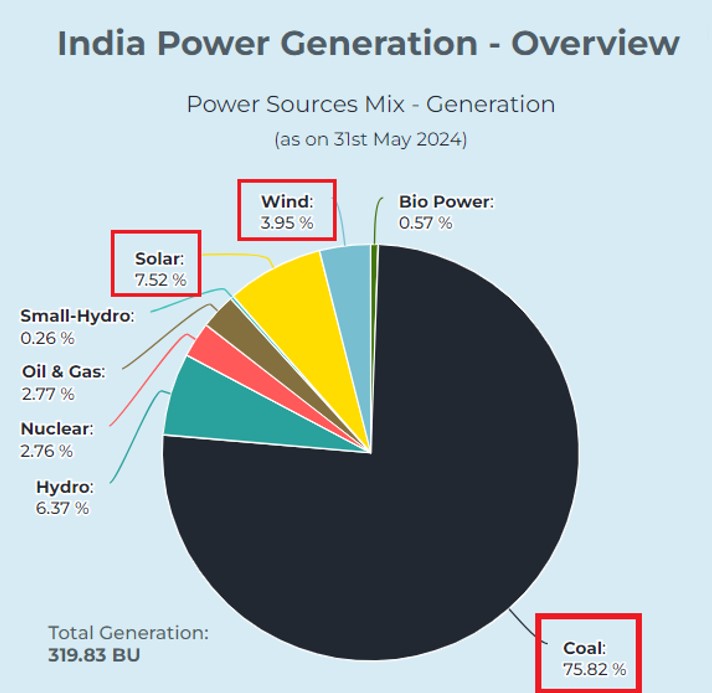
Majority of the power generated and injected into the Indian grid comes from fossil fuels like coal. Charing EVs with the grid means relying more on fossils to run an EV. Source: CEA
Noteworthy that charging EVs with the conventional electricity driven by the grid puts the whole exercise of reducing overall emissions under limb as majority of the power generated in India comes from polluting sources like by burning coals. Officials in the know say that solar-powered EV charging stations have the potential to reduce the dependency on electricity generated from polluting sources like coal. The Delhi state government has been backing EVs as one of the major ways to bring down vehicular emission levels. The state government also plans to have a zero-emission 8,000 strong electric bus fleet by 2035-2040, nearly quintupling its present capacity.
Other states remain committed to EVs, especially for public transport, which is bound to have a positive influence on private ownership as well.
Clear Guidelines to Help
In order to accelerate the adoption of EVs and create a robust charging ecosystem in India, the Ministry of Power (MoP) has also released its draft guidelines for electric vehicle charging infrastructure. Titled “Guidelines for Installation and Operation of Electric Vehicle Charging Infrastructure-2024”, these norms provide a comprehensive framework for developing charging stations in various settings.
The guidelines apply to EV charging infrastructure located in privately-owned parking spaces, semi-restricted areas like office buildings and public places like railway stations, petrol pumps etc.
Any individual or entity is allowed to set up EV charging stations under the provisions provided by the guidelines. DISCOMs must provide electricity connections for charging stations within specified timelines, with deadlines ranging from three to 90 days depending on the requirement for new distribution infrastructure.
As for incentivizing the setting up of chargers, tariffs have been detailed as well, at 0.7 times the average cost of supply during solar hours and 1.3 times the average cost of supply during non-solar hours. Separate metering for EV charging stations is mandated.
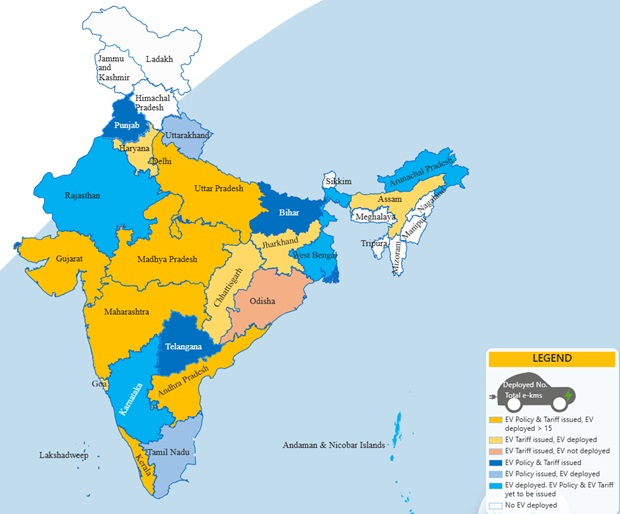
Several states have notified their EV Policies and EV Charging Tariffs but several states are still lagging behind in India. Source: EESL EV Convergence
The guidelines specify a least one charging station per square kilometre in urban areas by 2030, one charging station every 20 km on both sides of highways/roads and at least one fast-charger for long-range EVs and heavy-duty vehicles every 100km on highways. Additional PCS and FCS can be installed even if the required density exists.
Additionally, state governments will be fixing a ceiling on service charges for public charging stations to prevent price gouging.
In the state of Maharashtra, the Nashik Municipal Corporation has commenced the groundwork for 20 EV charging stations, which will be operational by the end of August this year. Rs 8 crore has been allocated for the establishment of these charging stations in the city.
World Moves Faster On EV adoption
Other countries are making strides as well, albeit in their own ways. In the United States (US), BP announced a partnership with Simon Property Group, the largest mall owner and developer in the US. The collaboration aims to install more than 900 ultra-fast charging bays across 75 of SPG’s shopping centers across the country, with the first ones set to be available by early 2026.
The initiative is a clear nod to Simon’s attempts to seize on waiting car owners’ idle minutes. One report found that 61% of EV owners report being more likely to shop where they can charge their cars. This has sparked a trend across the world, with malls in countries like the Philippines and Puerto Rico adding stations to several malls.
These moves can also help retailers appeal to consumers whose shopping decisions are influenced by the merchants’ alignment with their values around environmental concerns. According to a report from PYMNTS, 31% of young customers said that it was very important to them that they choose a merchant that offers sustainable brands or products.
By offering convenient charging options, the malls look to align themselves with consumers’ environmental concerns and position themselves as leaders in convenience.
As for charger compatibility, the new North American Charging Standard port developed by Tesla is being standardized by SAE international, with almost every large automaker signing on. These include Ford, GM, Toyota, Rivian, Volvo, Polestar, Nissan, Mercedes-Benz, Jaguar Land, Rover, Fisker, Hyundai, Stellantis, Volkswagen and BMW. New cars with NACS will start rolling out in 2026, which’ll perfectly coincide with the mall charger plan.
Seven automakers-BMW, Honda, GM, Hyundai, Kia, Mercedes-Benz and Stellantis have also joined together to create Ionna, a company built to provide easy-to-access public DC fast charging infrastructure in the US and Canada. Headquartered in Durham, North Carolina, the company aims to build a network that’ll feature retail offerings, food, restrooms and covered charging in an attempt to make the EV charging experience more analogous to what Americans are used to at the 100000 gas stations across the country.
Even Scotland was recently in the news for a new electric car charging hub. Installed by SSE and opened by the Cabinet Secretary for Transport, Fiona Hyslop on the 11th of July 2024. The Myrekirk Roundabout site features 24 ultra-fast charging bays with a total capacity of 2.5 MW, the equivalent of 258000 liters of petrol. Eight bays are capable of 360 KW. The hub is the first publicly accessible location in Scotland to feature charge units this powerful. The remaining 16 bays have 150 KW units. SSE plans to build 300 ultra-fast EV charging hubs powered by renewable energy across the UK and Ireland throughout the next 5 years as well. The car charging hub is likely part of the Scottish government’s commitment to phasing out petrol and diesel vehicles by 2030.
CHINA Extends Lead
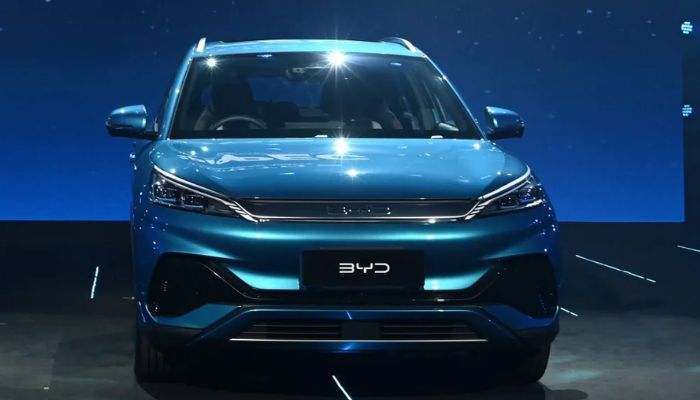
BYD Is China’s Leading EV Car Manufacturers which brought the attention of the globe on EV cars.
One can’t mention EVs without mentioning the manufacturing and usage behemoth that is China. With nearly 22 million EVs sold, the country almost doubles the amount of EVs present in the entirety of Europe. China’s public charger infrastructure network is the largest in the world, with over 1 million chargers-equivalent to the rest of the world. The chargers supply a total power capacity of 56 gigawatts and are concentrated in developed cities, with the top 15 cities accounting for 57% of the country’s total charger stock. Despite this, highways are a weak spot, with China’s highway public charger density being significantly lower than smaller countries like Norway. The situation might improve in the coming years, considering companies like Huawei installing 600 KW ultrafast chargers. Huawei aims to install 100000 fast EV charging stations this year, providing a boost to infrastructure.
Standardisation To Support Network Expansion
Finally, EV chargers are tech intensive and tech requires open standards. Thanks to project EVerest, part of a collaboration between the Joint Office of Energy and Transportation and the Linux foundation, developing reliable and interoperable electric vehicle chargers that support the latest communication protocols between EVs and charging stations has become easier and faster. In the same way that the Android OS simplified cell-phone development, LF Energy’s Everest project’s goal is to develop and maintain an open-source software stack for EV charging stations. EVerest runs on any device, from unmanaged home chargers to complex, multi-EV supply equipment and satellite public DC charging stations with battery and solar support.
The communication protocol requirements for EVerest allow for Plug and Charge functionality, which allows drivers to simply connect their vehicle to authenticate, pay and charge.
By Yash Singh





